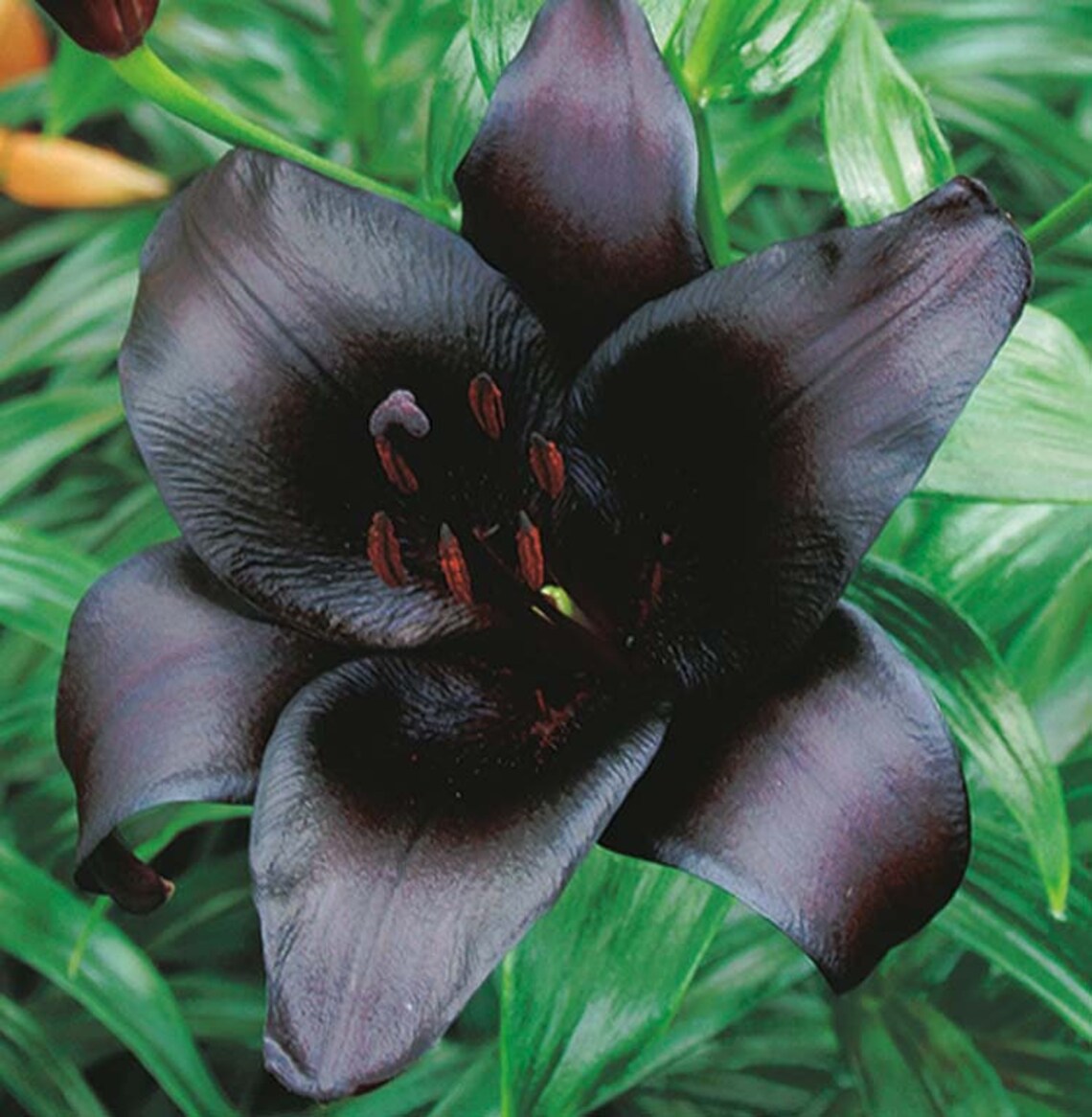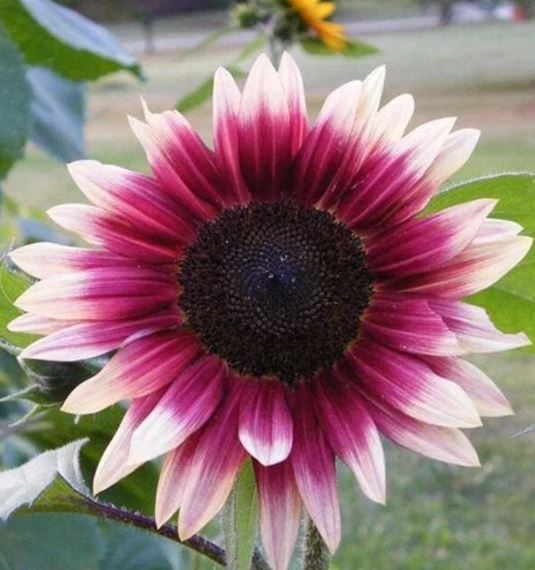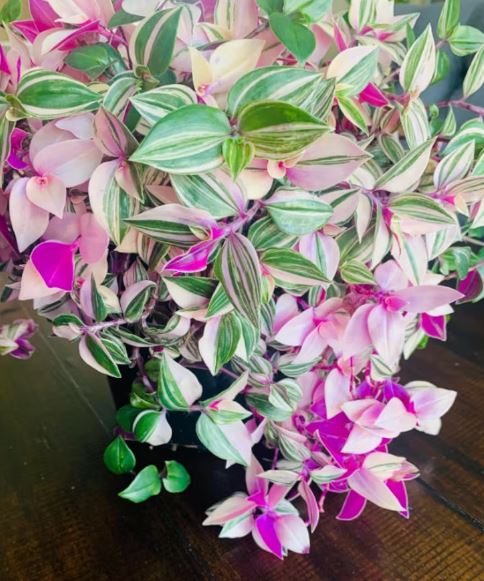‘Black Charm’
The “Black Charm” lily is a cultivar of the Asiatic lily (Lilium asiatica), which is a species of lily native to Asia. Here are some facts about the “Black Charm” lily:
- Appearance: The “Black Charm” lily is known for its dark, almost black, petals that have a slight shine. The flowers can grow up to 6 inches in diameter and have a distinctive trumpet-like shape.
- Blooming season: The “Black Charm” lily typically blooms in mid to late summer, with each stem producing several flowers.
- Height: The plant can grow up to 4 feet in height.
- Care: The “Black Charm” lily requires well-drained soil and regular watering. It prefers full sun to partial shade and can be grown in pots or in the ground.
- Toxicity: Asiatic lilies, including the “Black Charm” cultivar, are toxic to cats. If ingested, they can cause kidney failure in cats, so it’s important to keep them out of reach.
- Uses: The “Black Charm” lily is often used in flower arrangements and can add a dramatic touch to any garden or floral display.
- Hardiness: The “Black Charm” lily is a hardy plant and can survive in USDA zones 3-9, making it suitable for a wide range of climates.
- Other varieties: There are many other cultivars of Asiatic lilies, including “Orange County,” “Landini,” and “Monte Negro,” which also have dark-colored petals and are often used in floral arrangements.
Care Guide
Here are some tips for caring for a “Black Charm” lily:
- Soil: Asiatic lilies prefer well-drained soil that is rich in organic matter. You can amend the soil with compost or well-rotted manure before planting.
- Sunlight: These lilies prefer full sun to partial shade, with at least 6 hours of sunlight per day. If planted in a hot climate, they may benefit from some afternoon shade.
- Watering: Water your “Black Charm” lily regularly, keeping the soil moist but not waterlogged. Allow the top inch of soil to dry out between waterings.
- Fertilizer: You can fertilize your lilies with a balanced fertilizer, such as a 10-10-10 formula, in the spring before new growth appears. You can also feed them with a high-potassium fertilizer, such as a 5-10-10 formula, during the flowering season to promote blooming.
- Mulching: Mulch around the base of your lilies to help retain moisture in the soil and suppress weeds. Use a 2-3 inch layer of organic mulch, such as wood chips or shredded leaves.
- Deadheading: After the blooms have faded, you can remove the spent flowers to prevent seed production and encourage the plant to put its energy into producing more blooms.
- Winter care: In colder climates, you may need to protect your lilies from frost by covering them with a layer of mulch or straw. In the spring, remove the mulch and apply a layer of compost or fertilizer to encourage new growth.
- Pests and diseases: Asiatic lilies are generally resistant to pests and diseases, but you may encounter problems with aphids, spider mites, or botrytis (a fungal disease). You can control pests with insecticidal soap and treat fungal diseases with a fungicide.
Remember that Asiatic lilies, including “Black Charm,” are toxic to cats, so take care when planting them in areas where pets may be present.





